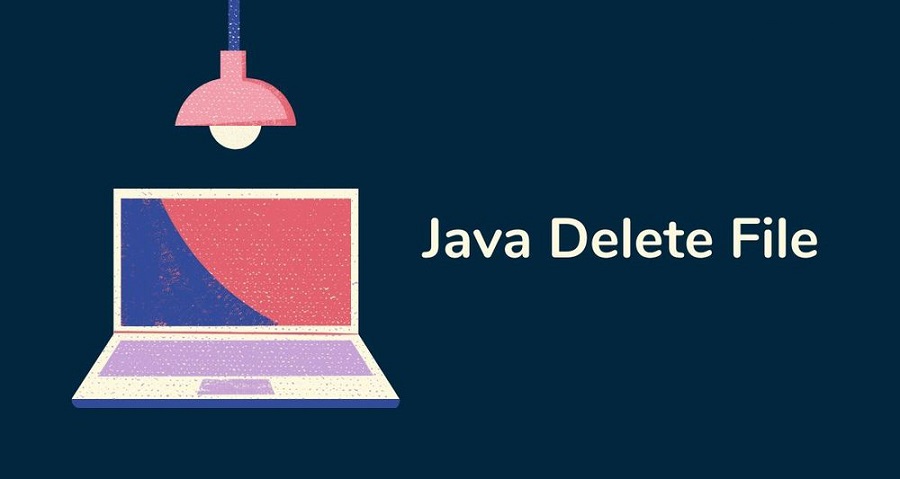Having another pair of eyes scan your code is always useful. It’s helped me get better at writing cleaner code and spot mistakes faster. You need not be an expert to review someone’s code. Some experience with the programming language and a review checklist should help you get started.
The following is a curated list of tips to keep handy while reviewing Java code.
Note: This isn’t an exhaustive list but should help you hit the ground running.
1. Follow Java code conventions
Following language conventions, helps quickly skim through the code and make sense of it, thereby improving readability.
All package names in Java are written in lowercase, constants in all caps, variable names in CamelCase, etc. Find the complete list of conventions here.
Some teams develop their own conventions, so be flexible in such cases!
2. Replace imperative code with lambdas and streams
If you’re using Java 8 +, replacing loops and extremely verbose methods with streams and lambdas makes the code look cleaner. Lambdas and streams allow you to write functional code in Java.
The following snippet filters odd numbers in the traditional imperative way:
List<Integer> oddNumbers = new ArrayList<>();
for (Integer number : Arrays.asList(1, 2, 3, 4, 5, 6)) {
if (number % 2 != 0) {
oddNumbers.add(number);
}
}
Below is the functional way of filtering odd numbers:
List<Integer> oddNumbers = Stream.of(1, 2, 3, 4, 5, 6)
.filter(number -> number % 2 != 0)
.collect(Collectors.toList());
class Items {
private final List<Integer> items;
public Items(List<Integer> items) {
this.items = items;
}
public Integer highest() {
if (items.isEmpty()) return null;
Integer highest = null;
for (Integer item : items) {
if (items.indexOf(item) == 0) highest = item;
else highest = highest > item ? highest : item;
}
return highest;
}
}
Before directly calling a method on an object I recommend checking for nulls as shown below.
Items items = new Items(Collections.emptyList());
Integer item = items.highest();
boolean isEven = item % 2 == 0; // throws Null Pointer Exception ❌
boolean isEven = item != null && item % 2 == 0 // ✅
It can be pretty cumbersome to have null checks everywhere in your code though. If you are using Java 8+, consider using the Optional class to represent values that may not have valid states. It allows you to easily define alternate behavior and is useful for chaining methods.
In the snippet below, we are using Java Stream API to find the highest number with a method which returns an Optional. Note that we are using Stream.reduce, which returns an Optional value.
public Optional<Integer> highest() {
return items
.stream()
.reduce((integer, integer2) ->
integer > integer2 ? integer : integer2);
}
Items items = new Items(Collections.emptyList());
items.highest().ifPresent(integer -> { // ? ?
boolean isEven = integer % 2 == 0;
});
Alternatively, you could also use annotations such as @Nullable or @NonNull which will result in warnings if there is a null conflict while building the code ie. passing a @Nullable argument to a method that accepts @NonNull parameters.
3. Directly assigning references from client code to a field
References exposed to the client code can be manipulated even if the field is final. Let’s understand this better with an example.
private final List<Integer> items;
public Items(List<Integer> items) {
this.items = items;
}
In the above snippet, we directly assign a reference from the client code to a field. The client can easily mutate the contents of the list and manipulate our code as shown below.
List<Integer> numbers = new ArrayList<>();
Items items = new Items(numbers);
numbers.add(1); // This will change how items behaves as well!
In the above snippet, we directly assign a reference from the client code to a field. The client can easily mutate the contents of the list and manipulate our code as shown below.
List<Integer> numbers = new ArrayList<>();
Items items = new Items(numbers);
numbers.add(1); // This will change how items behaves as well!
Instead, consider cloning the reference or creating a new reference and then assigning it to the field as shown below:
private final List<Integer> items;
public Items(List<Integer> items) {
this.items = new ArrayList<>(items);
}
4. Handle exceptions with care
◉ While catching exceptions, if you have multiple catch blocks, ensure that the sequence of catch blocks is most specific to least. In the snippet below, the exception will never be caught in the second block since the Exception class is the mother of all exceptions.
try {
stack.pop();
} catch (Exception exception) {
//handle exception
} catch (StackEmptyException exception) {
//handle exception
}
If the situation is recoverable and can be handled by the client (the consumer of your library or code) then it is good to use checked exceptions. eg. IOException is a checked exception that forces the client to handle the scenario and in case the client chooses to re-throw the exception then it should be a conscious call to disregard the exception.
5. Ponder over the choice of data structures
Java collections provide ArrayList, LinkedList, Vector, Stack, HashSet, HashMap, Hashtable. It’s important to understand the pros and cons of each to use them in the correct context.
A few hints to help you make the right choice:
Map – Useful if you have unordered items in the form of key, value pairs and require efficient retrieval, insertion, and deletion operations. HashMap, Hashtable, LinkedHashMap are all implementations of the Map interface.
List – Very commonly used to create an ordered list of items. This list may contain duplicates. ArrayList is an implementation of the List interface. A list can be made thread-safe using Collections.synchronizedList thus removing the need for using Vector.
Set – Similar to list but does not allow duplicates. HashSet implements the Set interface.
6. Think twice before you expose
There are quite a few access modifiers to choose from in Java – public, protected, private. Unless you want to expose a method to the client code, you might want to keep everything private by default. Once you expose an API, there’s no going back.
For instance, you have a class Library that has the following method to checkout a book by name:
public checkout(String bookName) {
Book book = searchByTitle(availableBooks, bookName);
availableBooks.remove(book);
checkedOutBooks.add(book);
}
private searchByTitle(List<Book> availableBooks, String bookName) {
...
}
If you do not keep the searchByTitle method private by default and it ends up being exposed, other classes could start using it and building logic on top of it that you may have wanted to be part of the Library class. It could break the encapsulation of the Library class or it may be impossible to revert/modify later without breaking someone else’s code. Expose consciously!
7. Code to interfaces
If you have concrete implementations of certain interfaces (e.g. ArrayList or LinkedList) and if you use them directly in your code, then it can lead to high coupling. Sticking with the List interface enables you to switch over the implementation any time in the future without breaking any code.
public Bill(Printer printer) {
this.printer = printer;
}
new Bill(new ConsolePrinter());
new Bill(new HTMLPrinter());
In the above snippet, using the Printer interface allows the developer to move to another concrete class HTMLPrinter.
8. Don’t force fit interfaces
Take a look at the following interface:
interface BookService {
List<Book> fetchBooks();
void saveBooks(List<Book> books);
void order(OrderDetails orderDetails) throws BookNotFoundException, BookUnavailableException;
}
class BookServiceImpl implements BookService {
...
Is there a benefit of creating such an interface? Is there a scope for this interface being implemented by another class? Is this interface generic enough to be implemented by another class? If the answer to all these questions is no, then I’d definitely recommend avoiding this unnecessary interface that you’ll have to maintain in the future.
Well then, what’s a good use case for an interface? Let’s say we have a class Rectangle and a class Circle that has behavior to calculate perimeter. If there is a requirement, to sum up, the perimeter of all shapes – a use case for polymorphism, then having the interface would make more sense, as shown below.
interface Shape {
Double perimeter();
}
class Rectangle implements Shape {
//data members and constructors
@Override
public Double perimeter() {
return 2 * (this.length + this.breadth);
}
}
class Circle implements Shape {
//data members and constructors
@Override
public Double perimeter() {
return 2 * Math.PI * (this.radius);
}
}
public double totalPerimeter(List<Shape> shapes) {
return shapes.stream()
.map(Shape::perimeter)
.reduce((a, b) -> Double.sum(a, b))
.orElseGet(() -> (double) 0);
}
9. Override hashCode when overriding equals
Objects that are equal because of their values are called value objects. e.g., money, time. Such classes must override the equals method to return true if the values are the same. The equals method is usually used by other libraries for comparison and equality checks; hence overriding equals is necessary. Each Java object also has a hash code value that differentiates it from another object.
class Coin {
private final int value;
Coin(int value) {
this.value = value;
}
@Override
public boolean equals(Object o) {
if (this == o) return true;
if (o == null || getClass() != o.getClass()) return false;
Coin coin = (Coin) o;
return value == coin.value;
}
}
In the above example, we have overridden only the equals method of Object.
HashMap<Coin, Integer> coinCount = new HashMap<Coin, Integer>() {{
put(new Coin(1), 5);
put(new Coin(5), 2);
}};
//update count for 1 rupee coin
coinCount.put(new Coin(1), 7);
coinCount.size(); // 3 🤯 why?
We would expect coinCount to update the number of 1 rupee coins to 7 since we override equals. But HashMap internally checks if the hash code for 2 objects is equal and only then proceeds to test equality via the equals method. Two different objects may or may not have the same hash code but two equal objects must always have the same hash code, as defined by the contract of the hashCode method. So checking for hash code first is an early exit condition. This implies that both equals and hashCode methods must be overridden to express equality.
Enter DeepSource
I described 10 issues you may come across while reviewing Java code. There is an endless list of issues, though, that could be overlooked by an individual(s). While
reviewing code is a good opportunity to learn, it could be a repetitive and tedious task; that’s where DeepSource comes in.
Source: javacodegeeks.com























